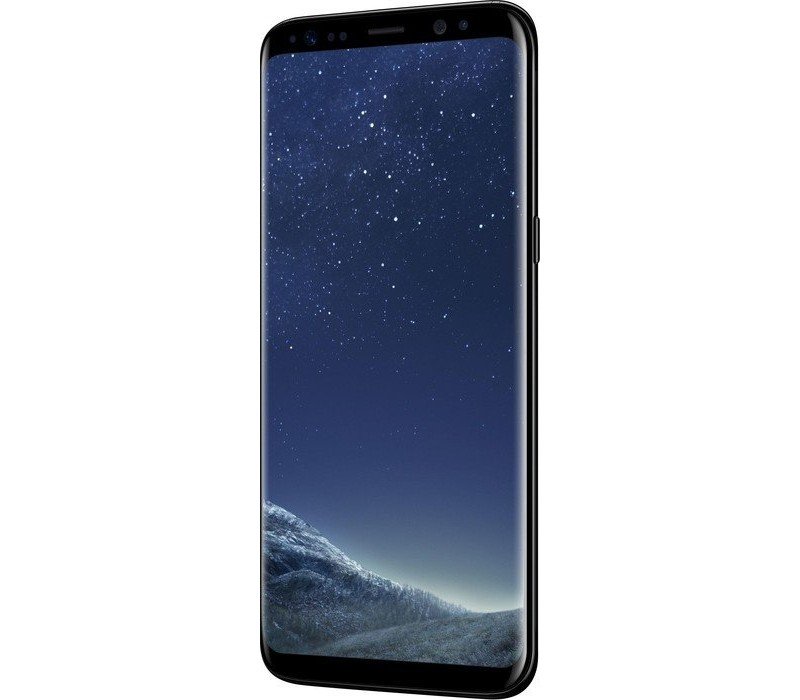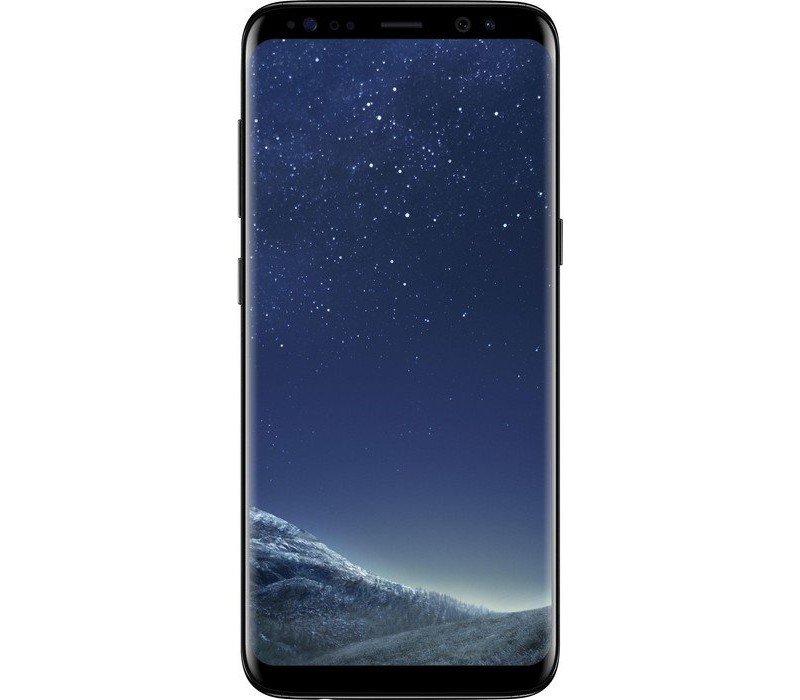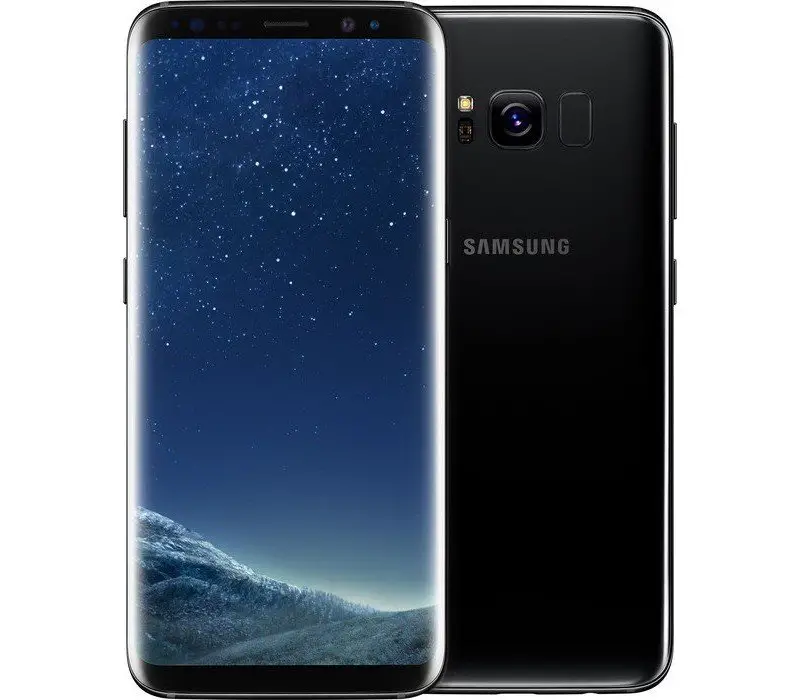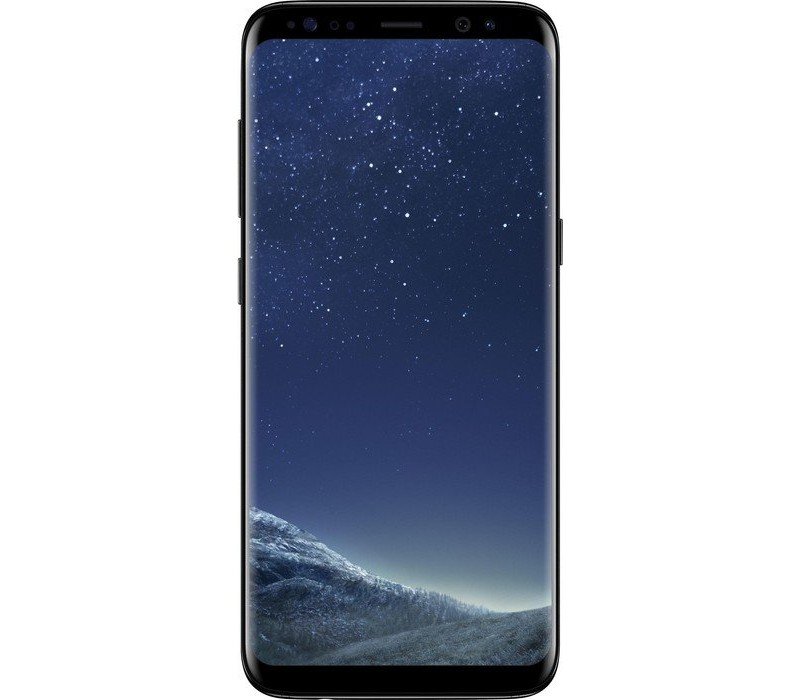The flagship smartphones of the South Korean company Samsung have long been an integral part of that category of devices that are most eagerly awaited by consumers. Just such interest provokes and Galaxy S8. This model is of impressive dimensions and came into the "arena" after the misfortunes surrounding the Note 7. In other words, it was tasked with the serious task of dispelling doubts about the quality of Samsung products. Because of this, the company has geared up to launch an excellent smartphone. The Galaxy S8 is just that.
Samsung Galaxy S8 Specifications

- Release date: 2017, March
- Colors: Midnight Black, Orchid Gray, Arctic Silver, Coral Blue, Maple Gold, Rose Pink, Burgundy Red
- Dimensions: 148.9 x 68.1 x 8 mm.
- Weight: 155 g.
- Screen: 5.8" in, 1440 x 2960, Super AMOLED
- Camera : Single, 12MP
- Chipset: Exynos 8895 Octa (10 nm)
- CPU: Octa-core (4x2.3 GHz Mongoose M2 & 4x1.7 GHz Cortex-A53) - EMEA
Octa-core (4x2.35 GHz Kryo & 4x1.9 GHz Kryo) - USA & China - Memory: 64 GB, 4 GB RAM
- Battery: 3000, Non-removable Li-Ion
- Network: GSM / HSPA / LTE
- Operating system: Android 7.0 (Nougat), upgradable to Android 8.0 (Oreo)
- Sensors: Iris scanner, fingerprint (rear-mounted), accelerometer, gyro, proximity, compass, barometer, heart rate, SpO2
If you are curious to find out all the details before reading the full review, visit the page for Samsung Galaxy S8 Specs, where you will find even the smallest detail about the phone.
Design

In this smartphone, we see a continuation of the visual style of the Galaxy devices S7 edge and Note 7. In them, we see Samsung's desire to abandon the use of large bezels around the screen, creating the illusion of their complete absence.
In the Galaxy S8, this has been achieved somewhat. The central element is the "infinity display", as the manufacturer defines it.
A 5.8-inch screen is housed in a 148.9x68.1mm case. It occupies 84.26% of the smartphone's front panel. The side edges are slightly curved, which gives the feeling that you are holding only a display in your hand.
The back of the Galaxy S8 isn't as expressive as the front, but again, it's designed with style and symmetry. The camera unit doesn't extend above the body level. The quality craftsmanship, choice of materials, and the embedded Gorilla Glass 5 protective glass create the feeling that you are using a perfect device.
The Galaxy S8 is IP68 water and dust resistant. You can immerse it in fresh water up to 1 metre deep and keep it there for up to 30 minutes. It will survive!
Display

As we mentioned a moment ago, the Galaxy S8's display takes up almost the entire front of the device. Its diagonal is 5.8 inches. The matrix is Super AMOLED, but with a non-standard resolution - 2960 x 1440 pixels. The aspect ratio is 18.5:9.
The display shows good color rendering and viewing angles. In the settings, you can select one of the possible modes in which the screen changes the display of colors, making them brighter or more natural.
Another interesting point is the screen setting that adjusts the resolution. The user can choose between HD+ (1480×720), Full HD+ (2220×1080) and WQHD+ (2960×1440).
Similar to what we see in the S7 edge, in the Galaxy S8 when the screen is locked, the display can show useful information. For example, time, date, battery level, calendar, custom image, and also notifications. This feature is known as Always on Display.
Performance

The Galaxy S8 is powered by a Samsung Exynos 8895 processor. This chip uses 4 power-efficient ARM Cortex A53 cores with an operating frequency of 1.7 GHz, and also 4 high-performance cores, a Samsung development whose frequency reaches up to 2.35 GHz. The top Mali-G71 MP20 accelerator is responsible for the graphics. It is 40% faster than the Mali T880MP12 chip that is embedded in the Galaxy S7 edge.
You also get 4 GB of RAM and 64 GB of internal storage in the Galaxy S8. Thanks to the microSD memory card slot, you can expand the memory.
Tests show that the performance level of the Galaxy S8 is extremely good. You won't have any criticism either about the interface performance or the apps.
Finger, face and retina scanners

With the Galaxy S8 in hand you have several methods to unlock the device. Using facial recognition, scanning the retina of the eye or a fingerprint. These methods have different levels of security. The latter two are said to be more reliable.
The fingerprint scanner is located on the back of the case, right next to the cameras. If you want to scan the retina, then the scanner is located on the front panel. It is infrared and therefore works well in both light and dark. It works excellently, the recognition rate is high. It may not work in too bright sunlight.
Interface

The cute and memorable Galaxy S8 runs Android 7.0 operating system. Its interface has been slightly tweaked and is called Samsung Experience.
Camera
Samsung smartphones traditionally shoot very well. The Galaxy S8 has a 12 MP main camera with f/1.7 aperture, optical and digital stabilization, 6 lens system and a sensor with quite large 1.4μm pixels. Compared to the S7 edge model, there is no change to the camera features. In the S8, the manufacturer has used a new revision of the camera module and also new processing algorithms. As a result, the camera shoots faster and photo detail is improved when shooting in low-light conditions.
We should also say that you can now store photos in both JPEG and RAW format by default.
The Galaxy S8's front-facing camera is an 8-megapixel camera with an f/1.7 aperture. It has HDR support, the ability to merge multiple photos into one to increase the angle of view, and also backlight the screen while shooting in the absence of sufficient light.
In other words, there aren't many changes to the Galaxy S8's main camera, but there are some. They have contributed to the boost in results. You definitely can't complain about the photos taken with this model.
Autonomous operation
After the mishaps with the Note 7, the South Korean company has paid serious attention to battery testing for its smartphones. Thus, the Galaxy S8 is "armed" with a 3000 mAh battery. The results are as follows:
You can watch HD+ resolution video uninterrupted for 8 hours and 46 minutes. If you change the resolution to Full HD+, this drops to a little over 7 hours and 30 minutes.
For a smartphone with such battery capacity, these results are excellent. Recharging is done via a USB Type-C port. Fast recharging and wireless recharging are supported.
Conclusion
The Galaxy S8 is a flagship device with a futuristic design and thin bezels around the impressive and enchanting 5.8-inch display. Excellent performance and a pleasant interface make interacting with the device an enjoyable experience. Not to mention the perfect photos that you'll want to post on social networks without worry. How can you not share them! They are the ultimate!
Pros:
- Design;
- Quality;
- Protection against water and dust;
- Display;
- Performance;
- Excellent cameras;
- Android 7 operating system;
- Autonomous operation;
- Recharge - both fast and wireless.
Minuses:
- Fingerprint scanner placement for some users is poorly chosen;
- Price is high;
- Keep the case.
Samsung Galaxy S8 video review
Disclaimer: The information presented in this article is based on our team's personal experience with the Samsung Galaxy S8 and third-party sources. While every effort has been made to provide accurate and reliable information, readers should keep in mind that this is a subjective assessment. The writing of this article was not paid for or sponsored by Samsung.

